Let's Read the 4e Monster Manual 2: Elemental
This article is part of a series! Click here to see the other entries.
Technically, any creature with the “elemental” origin is an elemental, but as we saw in the Elemental entry from the first monster manual the name is also used for a particularly wild subset of that plane’s denizens.
As you can see in that earlier post, Elementals proper are some of the “basest” life forms of the Elemental Chaos, with bodies that share a lot more with their constituent elements than with any sort of living organism. Unlike demons they’re not actively malicious, but they’re mercurial and easy to provoke into a rampage.
As magical beasts, they’re technically sapient, but their intellects tend to be rather limited. These creatures are also often bound by elementally-inclined ritual casters such as mortal wizards, efreets, and others.
The MM2 presents us with more elementals ranging from the mid-Heroic to the early Epic tier.
Chillfire Destroyer

A Large humanoid made of ice wrapped around a fiery core, which means it has zero chill. It’s a Level 14 Brute with 173 HP, lumbering about at Speed 5. It has 10 resistance to cold and fire, and is immune to disease and poison. Its fists do a mix of fire and cold damage, and it can also move its speed and trample anyone it comes into contact with during this movement.
As this elemental gets damaged, its shell begins to crack. Once it’s bloodied, its Leaking Firecore acts as an aura (radius 2) that deals fire damage to anyone caught inside. Once it reaches 0 HP, a Firecore Breach causes it to explode! This explosion is a Close Burst 3 vs. Reflex, dealing heavy fire damage.
Dust Devil
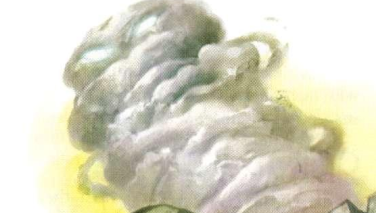
A being or air and earth, this capricious living whirlwind has a tendency to sandblast anyone who makes it angry. It’s Small, and a Level 3 Skirmisher with 47 HP and a ground speed of 8. No, they can’t fly. It’s immune to disease and poison, and it suffers a -2 penalty to all of its defenses if slowed or immobilized.
Its basic attack is Grasping Winds, which targets Reflex, does some physical damage and slides the target 3 squares. Gale Blast allows it to shift 5 squares by moving really fast, and try to knock anyone in the way prone (attack vs. Fortitude).
Once per encounter it can do that sandblasting trick with Stinging Sands (close burst 3 vs. Fortitude), which does heavy damage and blinds for a turn.
Flamespiker

These are a triple combination of air, earth, and fire, taking the form of a Medium stony humanoid who can use high-pressure air to fire red-hot spikes from its fiery core. They’re more like people than wildlife, and often end up hired as front-line muscle by other sapient elementals.
Flamespikers are level 5 soldiers with 66 HP and a ground speed of 7. Their immunities include disease, poison, and petrification, and they also have 10 fire resistance.
The flamespiker fights with its Reach 2 Stonespikes in melee, and can also fire them at out to range 10 as Spikebolts. Both attacks do physical damage, and the melee one also makes the target vulnerable to fire damage until the end of the spiker’s next turn. So it pairs really well with fire elementals.
If an enemy within reach shifts, the stonespiker can react with a Thunderfire Thrust (recharge 5+), which is a basic melee attack with an extra follow-up against Fortitude that does 5 thunder damage and stuns (save ends). This makes slipping past them a difficult proposition.
Geonid
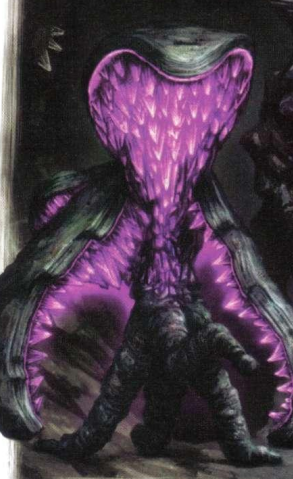
This Large creature has more of a metabolism than most elementals, and needs to hunt. A stony oyster-like creature, the geonid is extremely hard to tell apart from a boulder when its shell is closed. When it reveals itself, we can see that it’s yet another tentacular ambush predator that lives in the shallow Underdark.
They were initially created to guard the secret pathways of the world, and the secret caches of weapons, dormant war-beasts, and treasure hidden there by the forces of the primordials. Some of those caches are still out there, as are their guardians.
Geonids are Level 6 Lurkers with 56 HP. They’re immune to disease, petrification and poison, and cal roll around at speed 4. With its shell closed, potential victims must pass a DC 28 Perception check to realize it’s not a harmless boulder. At level 6, this is hard even for the party’s “radar”.
Once the geonid strikes, it fights with tentacle slaps that do standard physical damage. It can also use a capturing grab that consists of two weaker tentacle attacks. If both hit, it grabs the target (escape DC 17).
Once it’s grabbed someone, the geonid will close itself with Shell Slam, which does a lot of things at once. It slides a grabbed victim to the geonid’s space, and it tries to knock everyone in a close burst 2 prone (vs. Fortitude).
While the shell is closed, the geonid has a ground speed of 0 and a +5 to all of its defenses, and it can’t target anyone other than the grabbed victim it pulled inside its shell. The victim can also only target the geonid, but on the bright side it won’t have to contend with the defense bonus. If the victim escapes, it gets spit out and appears adjacent to the geonid, who can open its shell with a minor action.
Mudlasher
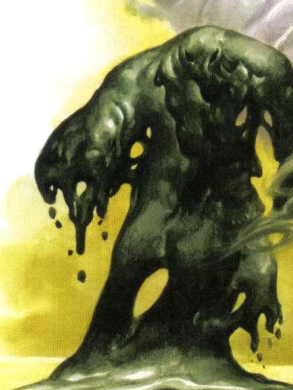
Another sapient elemental predator, mudlashers are made of well, mud. They slam and drown their victims, and then sit atop the corpse as a puddle to slowly digest it. They’re Medium Level 4 Brutes with 63 HP.
Their basic Slams do physical damage, and once per fight they can upgrade that to a Drowning Slam that targets Fortitude and adds an ongoing damage follow-up (save ends).
They can also fling mud balls at range (vs. Reflex), which do no damage but slow their targets. If a target is already slowed, it’s immobilized instead. This is good because the mudlasher gets a +2 to attacks against slowed or immobilized targets. A save will end either condition.
Rockfist Smasher
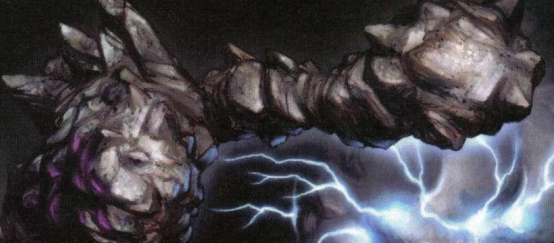
The name says it all: they’re humanoid rocks that like to smash with their fists. Smashers don’t need to eat, so they do that for fun. People who build elemental themed dungeons like to gather a bunch of these and lock them in chambers and at the bottom of pits as living traps.
These hooligans are Large, Level 10 Brutes with 125 HP, the standard suite of earth-creature immunities, and a speed of 5. Their Granite Punches do good damage and knock bloodied targets prone.
When a smasher gets bloodied itself, its Internal Avalanche triggers and begins accumulating kinetic energy. This gives the smasher 20 temporary HP. If it still has any temp HP at the start of its next turn, it gains an action point that must be used in that turn.
Shardstorm Vortex

These are living blizzards made of stone instead of ice. Despite this impressive description, they’re just Medium in size and are the scavengers of the Elemental Chaos. Shardstorms follow in the wake of more impressive beings and feed on what remains of their battles. In battle they work like slightly stronger dust devils.
They’re level 7 skirmishers with 80 HP. Their ground speed is 0, but they fly at speed 8 with hover capability and project a Sandblast aura (radius 1) that inflicts a -2 to all defenses of anyone caught inside.
Their basic attack is a Abrasive Slam that targets Fortitude and does physical damage. They can also perform Whirling Blasts (recharge 5+) that allow them to shift 4 squares and an attack at the end. This does heavy damage and pushes 1 square on a hit. It does half damage on a miss.
We also get two variant stat blocks for them as minions at levels 13 and 23. They still have the aura and the basic attack, but instead of the Blast they get a Vortex Step, an at-will 4-square shift with no built-in attack.
Stormstone Fury
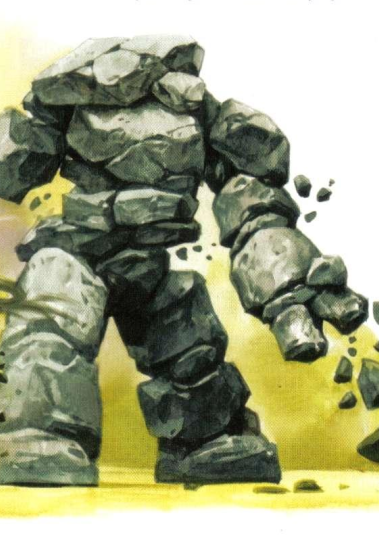
This is a Medium stone humanoid infused with the power of a storm. It can throw explosive stones, cause shrapnel to fly outward from its body, and meld into the ground for a quick escape. When fighting as part of a team they don’t really care about catching allies in their blasts, so if you find yourself on the same side as one of these, bring some thunder protection.
Furies are Level 14 Artillery with 113 HP and Speed 6. They have the usual immunity suite, and 10 thunder resistance. Its Grinding Stones melee basic attack is terrible, but its Hurtling Thunderstones have Range 20 and do half damage on a miss. Hit or miss, they also cause a follow-up explosion (burst 2 vs. Fortitude) that does thunder damage.
Shrapnel Burst is their “keep away from me” power, sending shrapnel that pushes 2 squares and does physical and thunder damage in a close burst 2 (vs. AC). If that fails, Meld to Ground removes them from the map for a turn, after which they reappear up to 10 squares away.
Tempest Wisp

This gaseous creature is a bit smarter than your average elemental, and actively seeks to either ally with or coerce other creatures to form groups that cooperate against threats. It uses its wind powers to push enemies around the battlefield, and hides behind its allies to avoid damage.
Tempest Wisps are Level 13 Controllers with 134 HP. They’re immune to disease and poison, and are insubstantial while not bloodied (i.e, while at over 50% HP). They have a flight speed of 7 with hover capability.
Their basic attack is an Air Slash (vs. Reflex) that does physical damage, and they can attack at range with Whistling Wind (ranged 10 vs. Reflex) for about the same damage and a 1-square slide.
Their limited special attack is hilarious! Named Tumbling Updraft (ranged 10 vs. Fortitude; recharge 5+), it does no immediate damage but instead lifts the target 20 feet up on a hit and restrains them (save ends). Each failed save causes the victim to be tossed up another 20 feet. On a successful save, the victim falls! That’s a minimum of 2d10 fall damage, plus another 2d10 for every failed save. It’s all subject to the standard rules for falls, though, so you might be able to reduce or avoid this damage in the usual ways.
Windfiend Fury

Yet another Angry Tornado, this one more purely “stormy” than the others. These Large beings like to hang around elemental storms, and so tend to get swept away into other planes. Sometimes archons will capture them and bind them to their flying ships as a power source and as a means to travel to other planes. You can also say these are the beings trapped at the core of those Eberron flying ships.
These are Level 12 Controllers with 123 HP and a flight speed of 8. Aside from the usual immunities to disease and poison they have 15 resistance to lightning and thunder.
They attack in melee with Flying Debris, and toss Lightning Strikes at range that do lightning damage and daze for a turn. Their “keep away!” power is a Storm Burst that does thunder damage and teleports them to just outside the area of effect.
Windstriker
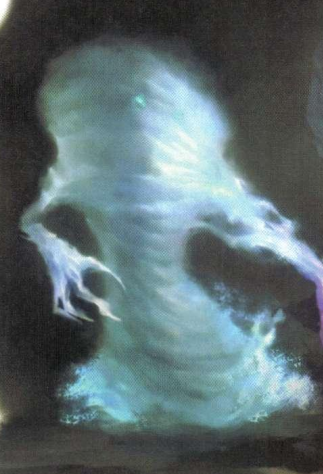
Our final Angry Tornado is Medium, and a Level 9 Lurker with 56 HP. They have the usual immunities and full-time insubstantiality, along with a flight speed of 8. It attacks unpredictably, though apparently not to feed.
All of their attacks do “cold and thunder” damage. They’re probably going to open up with Searching Wind (ranged 10 vs. Will), which knocks prone on a hit and marks the target as the windstriker’s quarry as an effect. Then they’ll follow that up with Lethal Windstrike (melee 2 vs. AC), which hits hard but only works against the quarry. Their basic Windstrike is a lot weaker, so it’s for emergencies only.
If the windstriker takes damage, it activates Shifting Wind as a reaction, which gives it the ability to ignore opportunity attacks and pass through enemy spaces during its next turn. So it’s going to be flitting back and forth to alternate marking someone as a quarry and attempting to assassinate them.
Encounters and Final Impressions
There’s a whole bunch of sample encounters here, but they’re all easily to described: assorted elementals of similar level, occasionally with someone who might be the spellcaster binding them, like a tiefling heretic or a beholder.
I like the lore of elementals in 4e on principle, and we have lots of mechanically varied stat blocks here… but there’s so many of them that they all kinda started blurring together by the end. I almost wish we had gotten an elemental “plug-in” module for the 4e monster design system rather than this long list full of angry rock giants and angry living tornadoes.